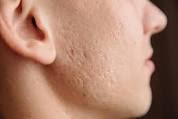Athlete's Foot: Causes, Symptoms, and Effective Treatments
Introduction:
Athlete's foot, also known as tinea pedis, is a common fungal infection of the feet that affects millions of people worldwide. This condition is caused by various types of fungi, primarily dermatophytes, which thrive in warm, moist environments such as shoes, socks, and communal bathing areas. In this comprehensive guide, we'll explore the causes of athlete's foot, discuss its symptoms, and provide insights into effective treatments to help individuals overcome this uncomfortable condition.
Causes of Athlete's Foot:
Fungal Infection: Athlete's foot is primarily caused by fungal organisms, including Trichophyton, Epidermophyton, and Microsporum species. These fungi thrive in warm, moist environments and can easily spread from person to person through direct contact or contact with contaminated surfaces.
Warm and Moist Environments: Warm and moist environments create ideal conditions for fungal growth, making the feet particularly susceptible to infection. Wearing tight-fitting shoes, sweaty socks, and walking barefoot in communal areas such as gyms, locker rooms, and swimming pools increase the risk of athlete's foot.
Poor Foot Hygiene: Inadequate foot hygiene, such as infrequent washing, improper drying between the toes, and wearing dirty or damp socks and shoes, can contribute to the development and persistence of athlete's foot. Maintaining good foot hygiene practices is essential for preventing fungal infections and promoting overall foot health.
Weakened Immune System: Individuals with weakened immune systems, such as those living with HIV/AIDS, undergoing chemotherapy, or taking immunosuppressive medications, are at higher risk of developing athlete's foot. A compromised immune response allows fungal pathogens to proliferate and invade the skin more easily.
Footwear and Clothing Choices: Tight-fitting shoes and socks that trap moisture and restrict airflow around the feet can create an environment conducive to fungal growth. Wearing breathable, moisture-wicking footwear and choosing socks made of natural, absorbent materials can help prevent athlete's foot.
Symptoms of Athlete's Foot:
Itching and Burning Sensations: Athlete's foot typically presents with itching, burning, and stinging sensations between the toes or on the soles of the feet. These symptoms may worsen with prolonged moisture exposure or friction from socks and shoes.
Redness and Inflammation: Infected areas of the skin may appear red, inflamed, and swollen, with visible scaling, peeling, or cracking. The skin may feel tender to the touch, and blisters or small fluid-filled bumps may develop in severe cases.
Peeling and Flaking Skin: Athlete's foot can cause the skin to become dry, scaly, and flaky, particularly between the toes and on the soles of the feet. Peeling and flaking skin may occur as the infection progresses, leading to discomfort and irritation.
Cracking and Fissures: Cracks or fissures may develop in the affected skin, especially in areas of prolonged friction or pressure. These fissures can be painful and may increase the risk of secondary bacterial infections if left untreated.
Odor and Discharge: In advanced cases of athlete's foot, the affected skin may emit a foul odor, particularly when moisture and sweat accumulate. Discharge or oozing of fluid from blisters or cracked skin may also occur, leading to further irritation and discomfort.
Effective Treatments for Athlete's Foot:
Antifungal Medications: Topical antifungal medications, such as clotrimazole, miconazole, terbinafine, and ketoconazole, are commonly used to treat athlete's foot. These medications work by inhibiting fungal growth and eliminating fungal pathogens on the skin's surface.
Antifungal Powders and Sprays: Antifungal powders and sprays containing ingredients such as miconazole or tolnaftate can help control fungal growth and prevent infection spread. These products are particularly useful for individuals with active lifestyles or those prone to recurrent infections.
Keeping Feet Clean and Dry: Practicing good foot hygiene is essential for preventing and managing athlete's foot. This includes washing the feet daily with soap and water, drying them thoroughly, especially between the toes, and wearing clean, dry socks and shoes.
Avoiding Irritants and Triggers: Avoiding irritants and triggers that exacerbate athlete's foot, such as tight-fitting shoes, sweaty footwear, and harsh chemicals, can help alleviate symptoms and prevent infection recurrence. Wearing breathable, moisture-wicking footwear and changing socks frequently can reduce moisture buildup and minimize fungal growth.
Over-the-Counter Remedies: Over-the-counter antifungal creams, lotions, and powders are available for the treatment of athlete's foot. These products contain active ingredients such as clotrimazole, miconazole, or tolnaftate and can be used as directed for mild to moderate cases of athlete's foot.
Conclusion:
Athlete's foot is a common fungal infection of the feet that can cause itching, burning, redness, and discomfort. It is primarily caused by fungal organisms that thrive in warm, moist environments, such as sweaty socks, shoes, and communal bathing areas. By understanding the causes and symptoms of athlete's foot and adopting effective treatments and preventive measures, individuals can effectively manage this bothersome condition and promote healthier feet. It's essential to consult with a healthcare professional for accurate diagnosis and personalized treatment recommendations tailored to individual needs and preferences. With proper care, hygiene practices, and adherence to treatment recommendations, individuals can alleviate symptoms, prevent infection recurrence, and enjoy greater comfort and confidence in their foot health.
Kindly
call now on our Mobile 8669086098 for booking an appointment
To know more about Dr. Amey Kelkar visit our website Derma Solutions





Comments
Post a Comment